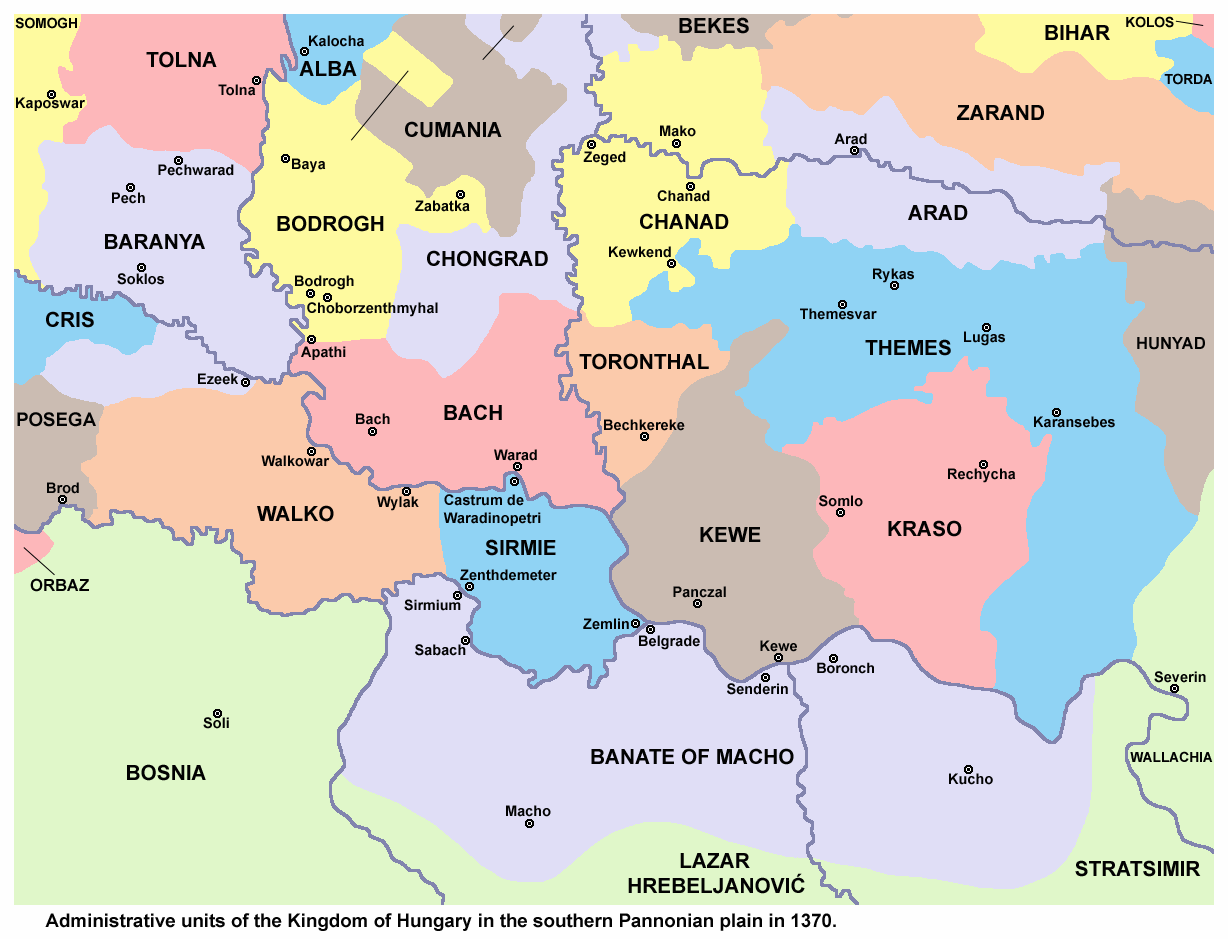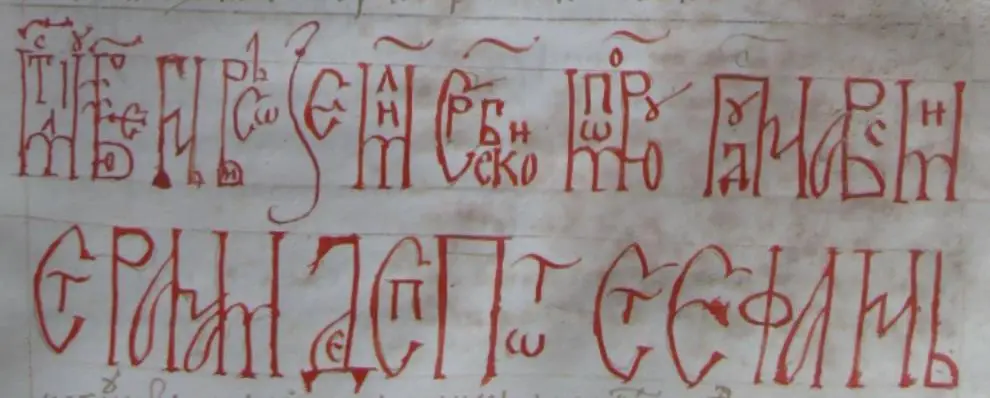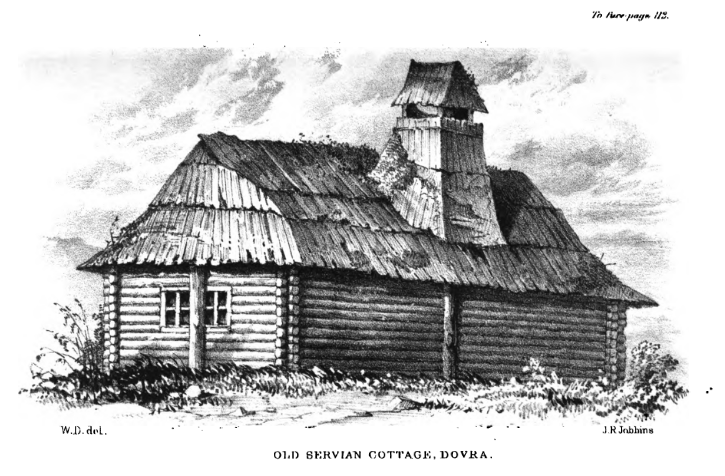By: Jevto Dedijer
IV
Due to the unbearable political circumstances, especially with regards to the lack of security of life and the oppression of Albanians and Turks the economic circumstances in this region have remained, despite the huge natural wealth, very primitive. The rural populace practices animal husbandry, agriculture and are migrant labourers. The south-facing sides of the Skopje valley are planted with vineyards which bear excellent harvests. Skoplje grapes and wine are especially appreciated and it is exported to Serbia. In the Skopje valley there are excellent harvests of grain, tobacco and poppy and in times past rice was sown on the banks of Lepenac [river, translator’s note]. The Torbeš [Macedonians Muslims, translator’s note] and Turks of the Skopje valley are also charcoal burners, along with practicing animal husbandry and agriculture. Ovče Polje is more of an animal husbandry than an agricultural area and has a lot of animals, especially sheep. In the fertile areas wheat is grown, often with poppies. The south-facing valley sides are often covered in vineyards.
In the regions of Debar, Golema Reka, Zajas, Kopač and Poreč the well-known Albanian anarchy is ruling, due to which every economic endeavour has become impossible. The peasants had to abandon the cattle breeding in the mountains and tilling the more distant fields. Only the fields around the houses and on river banks are being worked. The Albanians rustle cattle, take away children, extort and attack villages. Due to this any labour outside the villages becomes dangerous. It is also dangerous to take care of cattle, log for timber and till the more distant fields. Due to these circumstances the populace mainly works as migrant labourers. Anyone aged 13-60 goes off to labour. When away they work as builders, wood turners, then bakers, some become butchers and grocers. They go to Serbia, Bulgaria, Tetovo and Bitola. In Poreč the main economic branch is fruits, which is sold in Prilep and Skoplje. Many villages are surrounded by great fruit forests. The Tetovo valley is an unusually rich region. Grain harvests are so large that they can export it as well. Corn, wheat, barley, rye and oats and the tobacco is very good. Around Vardar flax and and hemp grow. This is one of the richest areas of the Balkan Peninsula when it comes to fruits. Around the Polog villages the orchards cover great land complexes. Polog apples and pears and widely well-known, which were carried over to Serbia, where they are known as Tetovo apples. They are exported to Skopje, Salonica and Constantinople. Besides this the area is rich with cattle. The “Šara” and “Korab” cheeses are also famous. In these regions, animal husbandry is especially well-developed. Both peasants and townsfolk practice it. Peasants from Skopska Crna Gora [Skoplje’s Montenegro, translator’s note] sell the milk from their cattle to the Jews of Thessaloniki and Armenians of Constantinople, who make kashkaval [type of cheese, translator’s note] out of it. There are townsfolk and very well-off merchants at that, who practice animal husbandry. The “big wigs” from Skopje and other towns have many heads of cattle which they keep in the Šara mountain inn the summer and bring them even to the Salonica fields. They also mostly export it (Svetozar Tomić, “Скопска Црна Гора”, “Насеља српских земаља”, vol III, p. 462). The valleys of the northern corner of Old Serbia are characteristic with their fertility, especially Kosovo and Metohija. There agriculture is developed to the detriment of animal husbandry, due to the fertile black soil which covers the topmost parts of the valley bottoms. Only the “raya” [lower classes, translator’s note] practices agriculture, with Albanians doing very little work. A significant portion of these regions is untilled and yet these fields represent a true breadbasket for the regions closer by. The fields of Malo and Veliko Kosovo [Lesser and Greater Kosovo, translator’s note] are particularly fertile, primarily because Lab [river, translator’s note] breaks its banks every year and leaves the silt on the lukas [lit. “ports”, but in this case it means tilled fields in more mountainous regions adjacent to a flowing body of water, translator’s note]. According to Branislav Đ. Nušić between two hundred and two hundred and thirty mills operate in Kosovo and one steam mill in Priština. It is also said that over ten million okkas [one okka was 1.2829 kg, translator’s note] of grain are exported to the Thessaloniki market, especially of the famed Kosovo wheat (Branislav Đ. Nušić . “Косово, опис земље и народа”. vol I. Published by Matica Srpska in Novi Sad, 1902, pp 51-56). It is undoubted that these regions are not yet sufficiently settled and that there is a lot of empty land fitting to be settled. These two valleys, Kosovo and Metohija could become the breadbaskets for great parts of the Balkan Peninsula, only if they were more densely settled and if the people who came there worked the land with more modern means, like in Vojvodina or Serbian parts of the Sava and Danube basins.
In these regions there are many ores and traces of where they were once excavated as well. In the Tetovo valley copper and silver ores were discovered. The Kosovo region is especially rich in ores. There are old mines around Novo Brdo, Janjevo, in Trenča by Mitrovica [Kosovska Mitrovica, translator’s note], by Slovinje, Gračanica, Kižnica and other places. Around Gnjilane much hemp is sown and rope-making industry is well-developed.
Almost all the villages of Old Serbia are of serfs; peasants live on the sipahis’ [Ottoman landed cavalrymen, translator’s note] or mosques’ lands, from which they have to pay a certain revenue to the mosque or the sipahi. These chiflik [Ottoman system for hereditary land management, translator’s note] came to be in two ways. In some cases the state would reward its clerks and soldiers with some village holdings from which they would gather a certain income (from a tenth to a quarter). The rest came to be by some more powerful Turks turning peasants into serfs by force. Albanians who live as peasants mostly own their own properties, which they got through a simple plunder from Serbian peasants. This plundering happened to a great extent and in the last twenty years they can be exactly proven.
It is interesting that migrant labouring on Kosovo and Metohija is not very developed. It is a special branch of the economy of Macedonians and Old Serbia residents from the area around Skoplje, Old Serbia, then some areas around Prizren. Mostly Serbs go to be migrant labourers, but lately there are also Albanians who do it. Serbs go to be builders, woodworkers, bread-makers, butchers, brick-layers and перамиџије. They go to Serbia, Wallachia and Bulgaria, with many of them getting rich and staying forever in the country they came to. When Albanians go to be migrant labour they mostly do harder jobs and become porters, цепари or ordinary labourers. Migrant labour often shows up as a consequence of anarchy, which sets in as soon as Albanians show up in a region, in most cases it is an old way of earning money, which later becomes a habit and which is a special trait of Aromanians and in areas where there was a sizeable Aromanian population.
Besides its natural riches and important geographic position Old Serbia is of varied importance for the whole Serbian nation, especially due to the position it takes between Serbian lands and because of the ethnographic processes which are carried out, in the last three centuries, to the harm of the Serbian people. Here the former and current position of Old Serbia among other Serbian lands and towards other parts of the Serbian people into consideration. It should be pointed out that Old Serbia represented the most important and cultured Serbian land in the Middle Ages, that it was the core from which and around which developed the two-hundred-year-old Nemanjić state. It was the centre of that strong state, which spread from the banks of Neretva and Bosna to Vardar and Demir Kapija and from the Danube to the Adriatic. That all the important medieval capitals of Medieval Serbia were in it testifies to its importance: Ras, Pauni, Priština, Prizren and Skoplje and the remains of advanced agriculture and many mining and merchant towns testify to its economic development. Finally the cultural verve of these areas is attested to by the developed clerical and chronological literature, which bloomed in the many monasteries and courts of the individual nobles, with the building and iconographic arts being especially developed, which was on the path to create a specifically Serbian architectural and painting style from the Byzantine models.
For the history of Serbian people, for its spiritual unity and for the elan of our national poetry and traditional literature certain events which took place in these region are of crucial importance. Of the greatest importance is the Battle of Kosovo, which does not simply mean a single date in Serbian history and one of those fateful events, but one of those rare historical events under whose influence the soul of a whole people is formed, together with its entire spiritual culture. The defeat at Kosovo, which was the cause of map changes in the XV and XVI century in Eastern Europe, was for the Serbian people, almost for the entire Yugoslavdom, an event which spiritually united the great masses of Serbian and Yugoslav peoples and made of them a people which started its new history from that date. The Kosovo tradition is today the joint spiritual property of not only the various parts of Serbian, but the entire Serbo-Croatian and even a significant part of the Bulgarian people. It is sung of in the wide are from Trieste to Thessaloniki, from Skadar to Rila.
These cultural-historical moments, which can exert a certain influence over the masses, sometimes even great influence, are for us questions of the second order before the question of the importance of these regions to the Serbian people as an ethnographic whole. With this question one should keep in min that Old Serbia has remained not only the central area among eastern Serbian lands, but it is the only region through which the various parts of the Serbian people can directly communicate between themselves. Old Serbia is a land in which the land of the Morava-Vardar Serbs touches the regions of the Dinaric Serbs. And, due to special circumstances, this zone where these two great parts of the Serbian people meet has become very narrow, creating a danger for the necessary contact to be interrupted, which would mean an impossibility of the Serbian people to exist as an ethnographic whole, which would mean the ruin of a people.
Translated by Books of Jeremiah



